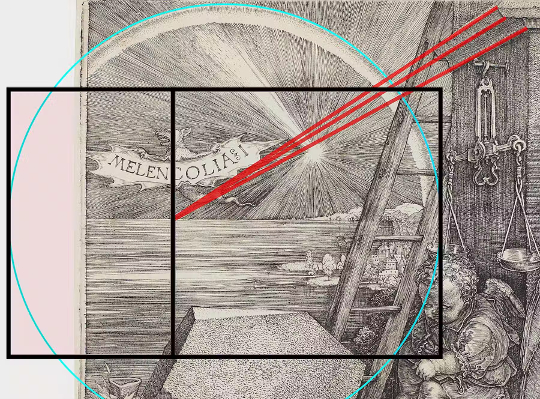
What does something have to have to give us pleasure? Kelly Sikkema / Unsplash
We humans, like other cognitive systems, are sensitive to our environment. We use sensory information to guide our behaviour. To be in the world.
We decide how to act based on the hedonic value we assign to objects, people, situations or events. We seek out and engage in behaviours that lead to positive or rewarding outcomes and avoid those that lead to negative or punitive consequences. We construct our knowledge of the world according to how much we like elements of the environment, and we do so by learning and generating expectations about them.
Hedonic valuation is, in short, a fundamental biological mechanism. Moreover, it is crucial for survival.
Normative tradition
For millennia, philosophers and scientists have pursued a common goal: to identify laws that link the properties of objects and the pleasure of perceiving them.
The idea that preference emanates from the object goes back to classical philosophical thought. The Pythagorean school held that the hedonic value of any object lied in the harmony and proportion between its parts. Similarly, properties such as symmetry, balance and the golden ratio have been postulated as determinants of our tastes.
 Representation of how the golden ratio is used in Dürer’s Melancholia I. UpdateNerd / Wikimedia Commons, CC BY-SA
Representation of how the golden ratio is used in Dürer’s Melancholia I. UpdateNerd / Wikimedia Commons, CC BY-SA
This philosophy assumes that hedonic value is inherent to the object. It is therefore expected to elicit predetermined responses in terms of beauty, taste or delight.
The modern epitome of this tradition is a recent study in Nature Human Behaviour. Its authors claim that preferences can be predicted from characteristics from stimulus.
But then why do we have such different and changing tastes? Why do we love what others hate, and vice versa? How is it possible to stop liking something we used to love, or vice versa? Are the properties of stimuli not enough to explain why we like what we like?
Hedonic sensitivity
These theories and the assumption on which they are articulated have not withstood empirical scrutiny. Symmetry does not appeal to everyone; it depends on experience and personality. Preference for the golden ratio captures the average taste, not the individual one.
It is a mistake to assume that general trends imply uniformity or inform universal laws. In reality, they mask significant variability in hedonic sensitivity. That is, in the role that the properties of objects play in how much we like them.
Each person brings a unique set of experience and knowledge to valuation. Valuation is also related to the situation in which it takes place. Hence the saying “to each his own”.
Individual differences
Certainly, we like different things in different ways. One reason for this is that brains are different, due to genetic, developmental or experiential causes. This means that the processes underlying valuations also vary.
Examining these individual processes is key to understanding the overall mechanisms. Neuroscience has contributed substantially in this respect.
Connectivity between sensory areas and the reward system is essential for hedonic valuation. It explains a large variability in the pleasure we derive from stimuli such as music. This means that the pleasure of listening to music depends on how these brain areas communicate. So much so that sensory information that is not transmitted to the reward system has no hedonic value. This is the case in music-specific anhedonia, where such communication is impaired. As a result, people with this condition are unable to experience pleasure from music.
Another important factor is previous experience, responsible for differences in taste between people and between different moments in the life of a person.
Familiarity is essential for defining preferences. In fact, the pleasure experienced with familiar and unfamiliar music involves different brain activity. Even if too much repetition can make us jaded, we like what we know.
Liking objects belonging to different categories is biased by our preferences. So the preferred category sets the yardstick by which we evaluate both objects. That is, we choose by comparison between the default answer and its alternative.
Contextual factors
Individual differences explain the diversity in taste among people. And how valuation is articulated modulates taste according to circumstances. We like different things at different times.
So how do we develop preferences? Physical entities relevant to survival are associated with specific sensory properties. This allows us to learn to detect dangers and advantages – the basic principle by which we generate preferences. However, that doesn’t really explain why our tastes vary. One reason is that valuations are context-sensitive.
Most cognitive systems develop mechanisms that allow them to consider other relevant information concerning the state, needs, goals and expectations of the system, and the conditions of valuation. For example, females’ mate choice is affected by the preference of other females: female guppies like a previously rejected male if they later see other females chasing him.
Expectations, physiology and environment have a significant influence on valuation. They affect the way perceptual, cognitive and emotional systems act on it.
For example, when we are hungry, eating something sweet is often very pleasurable. As we get fuller, the pleasure of eating decreases, to the point where we loathe our favourite foods at certain times.
Valuation systems
In short, hedonic value is not inherent to the object. It cannot be predicted solely on the basis of its characteristics. It depends on individual neurobiology and the computational resources involved.
This does not imply that the assessments are arbitrary. If they were, they would have little biological utility. On the contrary, brain mechanisms have evolved to provide flexible responses in a changing environment.
The same stimulus can take on radically different values depending on the situation. It may be beneficial to one individual and detrimental to another; beneficial under some circumstances and detrimental in others.
Thus, valuation systems are adaptive, not prescriptive. They serve survival much better by predicting the value of objects in specific situations.
Perception is not a passive recording of the properties of objects. It is the means by which an active cognitive system attempts to make sense of the world. And it does so by continually evaluating the experience, goals and expectations associated with them.
Our view of the world is never naïve. We perceive and evaluate through an individual and situated lens; the lens of our experience, knowledge, interests, needs, goals and expectations.
We like what we like because we are who we are, here and now.![]()
About The Author
Ana Clemente, Postdoctoral researcher in cognitive neuroscience, Universitat de Barcelona
This article is republished from The Conversation under a Creative Commons license. Read the original article.

Books Improving Attitude and Behavior from Amazon's Best Sellers list
"Atomic Habits: An Easy & Proven Way to Build Good Habits & Break Bad Ones"
by James Clear
In this book, James Clear presents a comprehensive guide to building good habits and breaking bad ones. The book includes practical advice and strategies for creating lasting behavior change, based on the latest research in psychology and neuroscience.
Click for more info or to order
"Unf*ck Your Brain: Using Science to Get Over Anxiety, Depression, Anger, Freak-Outs, and Triggers"
by Faith G. Harper, PhD, LPC-S, ACS, ACN
In this book, Dr. Faith Harper offers a guide to understanding and managing common emotional and behavioral issues, including anxiety, depression, and anger. The book includes information on the science behind these issues, as well as practical advice and exercises for coping and healing.
Click for more info or to order
"The Power of Habit: Why We Do What We Do in Life and Business"
by Charles Duhigg
In this book, Charles Duhigg explores the science of habit formation and how habits impact our lives, both personally and professionally. The book includes stories of individuals and organizations who have successfully changed their habits, as well as practical advice for creating lasting behavior change.
Click for more info or to order
"Tiny Habits: The Small Changes That Change Everything"
by BJ Fogg
In this book, BJ Fogg presents a guide to creating lasting behavior change through small, incremental habits. The book includes practical advice and strategies for identifying and implementing tiny habits that can lead to big changes over time.
Click for more info or to order
"The 5 AM Club: Own Your Morning, Elevate Your Life"
by Robin Sharma
In this book, Robin Sharma presents a guide to maximizing your productivity and potential by starting your day early. The book includes practical advice and strategies for creating a morning routine that supports your goals and values, as well as inspiring stories of individuals who have transformed their lives through early rising.






















